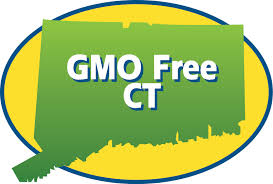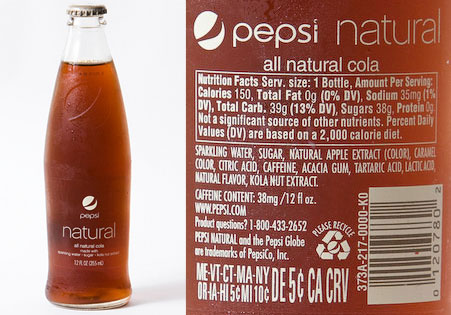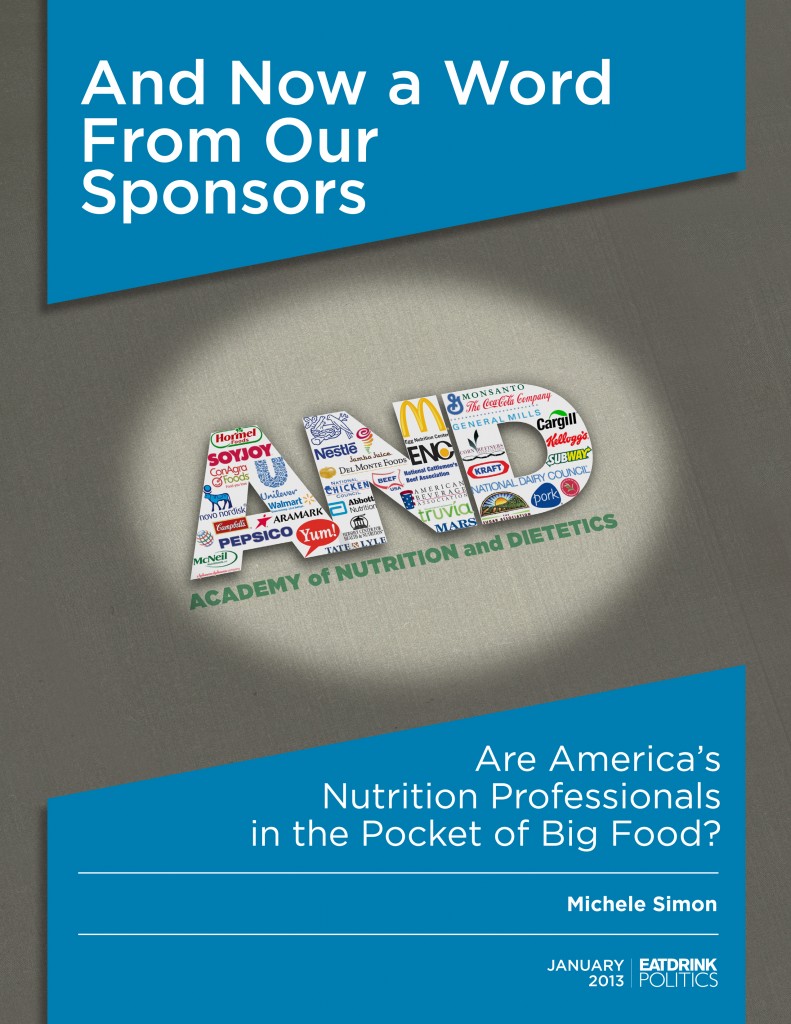
Food Policy
Posted on Monday, July 22nd, 2013 by Michele Simon

Nutrition Facts for Land O Lakes “Fresh Buttery Taste” Spread
Serving Size: 1 tbsp (14g)
Amount Per Serving
Calories 70
Calories from Fat 70
Total Fat 8 g 12%
Saturated Fat 2 g 10%
Trans Fat 0 g
Ingredients: Liquid Soybean Oil, Water, Partially Hydrogenated Soybean Oil, Buttermilk*, Hydrogenated Soybean Oil, Contains Less Than 2% of Salt, Hydrogenated Cottonseed Oil, Cream*, Distilled Monoglycerides, Soy Lecithin, Potassium Sorbate (Preservative), Lactic Acid, Natural and Artificial Flavor, Vitamin A Palmitate, Beta Carotene (Color).
Short Answer: Because FDA says it’s OK to lie to you.
Labeling is one of the more complex areas of food law, full of statutes, regulations, exemptions, and exceptions. In 1990, Congress updated food labeling law with the Nutrition Labeling and Education Act, which gave the Food and Drug Administration authority to require specific types of nutrition labels on most food products. The handy Nutrition Facts panel you see on foods today displaying calorie, carbohydrate, fat, protein, and other nutrient amounts is the result of FDA implementing this law.
Continue reading →
Posted in Ask a Food Lawyer, Food Policy | Tagged: deceptive health claims, FDA, junk food, nutrition labeling | Michele on Google+ | View/Add Comments (5) |
Posted on Wednesday, July 10th, 2013 by Michele Simon
By Michele Simon and Andrew Kimbrell
You may have noticed the impressive grassroots movement gathering steam lately over the labeling of genetically engineered (GE) foods. Recently, Connecticut became the first state in the nation to enact a law to require such labels, and 26 other states have introduced similar bills this year. Millions of Americans are demanding more transparency in the food supply and our elected officials are finally responding, after decades of work by groups like Center for Food Safety. But one advocacy group, Center for Science in the Public Interest (CSPI), often seen as a leader in nutrition policy, stands virtually alone in its continued opposition to labeling GE foods. This stance is troubling and confusing given how outspoken CSPI has been for decades on food labeling and consumer information.
Read rest at Center for Food Safety.
Posted in Big Food, Food Law, Food Policy, Food Safety | Tagged: California Prop 37, Center for Food Safety, CSPI, FDA, GMO labeling, GMOs, I-522, junk food, Monsanto | Michele on Google+ | View/Add Comments (2) |
Posted on Monday, July 8th, 2013 by Michele Simon
Have you ever wondered:
- What does “natural” mean on food labels?
- Do corporations really have a free speech right to advertise to children?
- Why are some foods containing hydrogenated oils still labeled “zero grams trans-fat?”
- Why can’t we just sue the food industry for making people sick?
These are just some of the questions that I’ve received from curious readers. For this new blog series, I will answer these and other questions related to the exciting and still emerging, but critical area of food law.
Continue reading →
Posted in Ask a Food Lawyer, Food Law, Food Policy | | Michele on Google+ | View/Add Comments (6) |
Posted on Tuesday, June 25th, 2013 by Michele Simon
Last year, I wrote about this topic out of frustration that lists like this one tend to neglect an entire profession. It seems one year later, this serious omission continues to persist. And just to prove my point, my 2013 list does not repeat any of the lawyers I listed in 2012, but be sure to check them out too as they are still deserving of the recognition.
Continue reading →
Posted in Big Food, Food Law, Food Policy | Tagged: Center for Food Safety, deceptive health claims, litigation, PepsiCo | Michele on Google+ | View/Add Comments (5) |
Posted on Wednesday, June 12th, 2013 by Michele Simon
In what is becoming an all too familiar sight, the major food corporations recently teamed up with the First Lady’s Partnership for a Healthier America to announce their latest PR attempt to look like they are helping Americans eat healthier. A group calling itself the Healthy Weight Commitment Foundation, led by the CEO of PepsiCo–the nation’s largest junk food and sugary beverage pusher–claims to have delivered on its promise made in 2010 (a commitment, get it?) to reduce calories “in the marketplace” by 1.5 trillion. They further claim to have exceeded this goal, and all this a full three years ahead of schedule. The quotes by all involved were practically giddy.
Continue reading →
Posted in Big Food, Food Policy, Industry Tactics | Tagged: Big Food, Big Soda, calories, deceptive health claims, junk food, Let's Move, PepsiCo, public relations | Michele on Google+ | View/Add Comments (2) |
Posted on Tuesday, June 11th, 2013 by Michele Simon


It seems hardly a week goes by without another foodborne illness outbreak. This time, in frozen organic berries, proving once again that even the health-conscious are not immune from getting sick. Although you wouldn’t know it from the packaging, the contaminated fruit came from overseas, raising several questions such as: Can we trust the USDA organic seal on imported food? I address this and other issues about our globalized food system in my latest article for Center for Food Safety, which you can read on their site here.
Posted in Food Policy, Food Safety, Public Health | Tagged: FDA, food safety, organic, outbreak, USDA | Michele on Google+ | View/Add Comments (0) |
Posted on Tuesday, June 4th, 2013 by Michele Simon
Connecticut Makes History as First State to Pass GE Food Labeling Law

This week, Connecticut won the honor of becoming the first state to pass a law requiring genetically-engineered foods to be labeled. (The governor has indicated he will sign.) It was really only a matter of time. The disappointing defeat of Prop 37 last fall in California (thanks to a massive industry disinformation campaign) sparked a national movement that has resulted in labeling bills getting introduced in about half the states.
But how did the small state of Connecticut make this happen?
Continue reading →
Posted in Big Food, Food Policy, Food Safety | Tagged: agriculture policy, California Prop 37, food safety, GMO labeling, GMOs, Monsanto | Michele on Google+ | View/Add Comments (10) |
Posted on Thursday, May 23rd, 2013 by Michele Simon

In March, when I first wrote about how the biotech rider—called the Monsanto Protection Act by its vocal opponents—undercut the constitutional concept of separation of powers, it seemed hardly anyone (other than the usual advocacy groups) was paying attention. But then a lot of people got mad, really mad.
Within a few short weeks the issue exploded in the mainstream media, with the surest sign the issue had hit the big time being (what else?) coverage by The Daily Show (hilariously entitled, “You Stuck What Where?”). Another indication was outrage even from a Tea Party blogger.
Continue reading →
Posted in Big Food, Food Policy, Food Safety, Industry Tactics | Tagged: agriculture policy, Big Food, Congress, farm bill, FDA, food safety, GMO labeling, GMOs, lobbying, Obama, USDA | Michele on Google+ | View/Add Comments (17) |



















